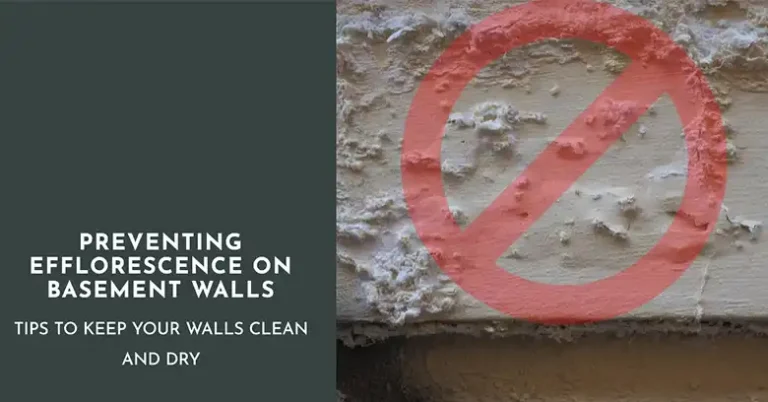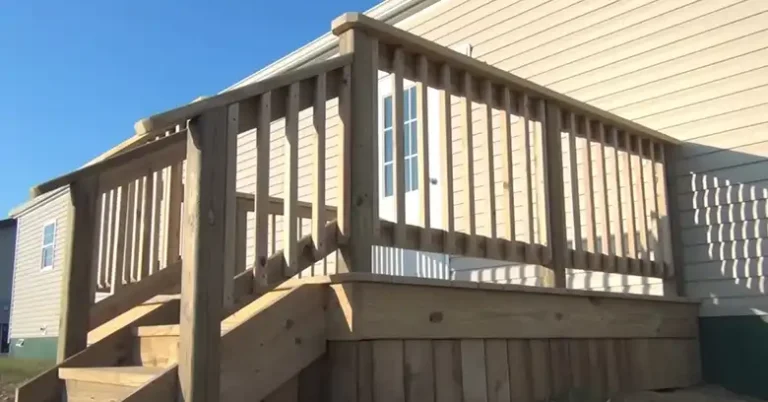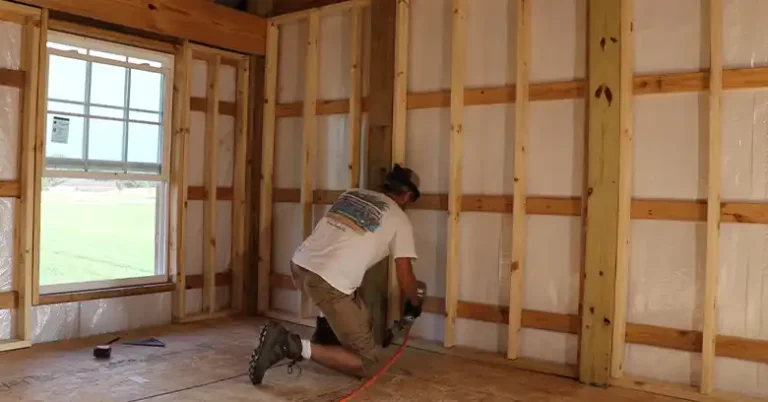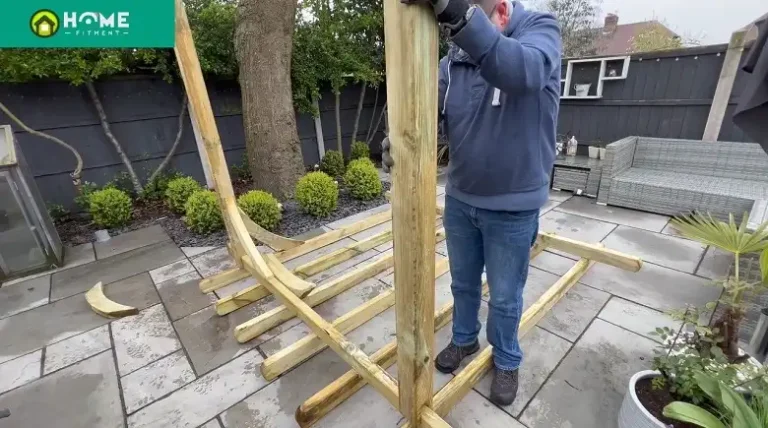How to Cut Vinyl Plank Flooring Around a Toilet
Vinyl plank flooring has become increasingly popular due to its durability, water resistance, and aesthetic appeal. However, installing this flooring in a bathroom presents unique challenges, particularly when it comes to cutting around fixtures like toilets. This guide will walk you through the process of cutting vinyl plank flooring around a toilet, ensuring a professional-looking finish that will protect your subfloor and enhance your bathroom’s appearance.

What Preparations are Required to Cut Vinyl Plank Flooring?
Before getting into the cutting process, it’s crucial to gather the right tools and materials. Proper preparation not only makes the job easier but also ensures safety and precision.
Required Tools and Materials
- Safety glasses (Always protect your eyes when cutting vinyl, as small particles can fly up during the process)
- Utility knife (Ideal for scoring and making straight cuts on vinyl planks)
- Jigsaw or vinyl cutter (Essential for making curved or intricate cuts around toilet bases. A jigsaw with a fine-toothed blade designed for vinyl is preferable.)
- Pencil or marker (Use to trace templates or mark cutting lines. Choose a color that’s visible on your vinyl.)
- Tape (optional) (Masking or painter’s tape can help secure templates or mark cutting lines more clearly)
- Cardboard or scrap vinyl plank (For creating templates to trace around the toilet base)
- Ruler or straightedge (Ensures straight lines for accurate cuts)
- Gloves (Recommended to protect your hands from sharp edges and tools)
How Do You Cut Vinyl Plank Flooring Around a Toilet?
When it comes to installing vinyl plank flooring in a bathroom, the toilet presents a unique challenge. You have two primary methods: cutting around an installed toilet or removing the toilet entirely. Each approach has its advantages and is suited to different skill levels and toilet types. Let’s explore both methods to help you decide which is best for your project.
Method 1: Cutting Around an Installed Toilet
This method is best for standard toilet installations and novice DIYers. It minimizes the risk of toilet removal mishaps.
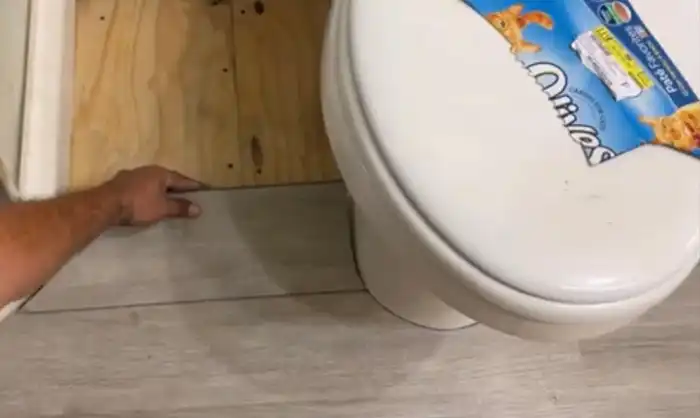
Step 1: Follow the manufacturer’s instructions to lay your vinyl plank flooring up to the toilet area.
Step 2: Apply a cutting method according to your toilet base. Like –
Template Method (Ideal for toilets with curved or irregular bases)
- Create a template using cardboard or a scrap plank. Place it against the toilet base and trace the outline.
- Cut out the template and test its fit. Adjust as needed.
- Place the template on your vinyl plank, trace the outline, and cut with a jigsaw or vinyl cutter.
Or, Direct Measurement and Cutting (Suitable for experienced DIYers or simple toilet bases)
- Measure from the last laid plank to various points around the toilet base and flange.
- Mark these measurements on your vinyl plank.
- Use a jigsaw to cut along your marked lines, taking care around curves.
Method 2: Cutting After Removing the Toilet
This method provides a cleaner installation but requires more skill and effort.
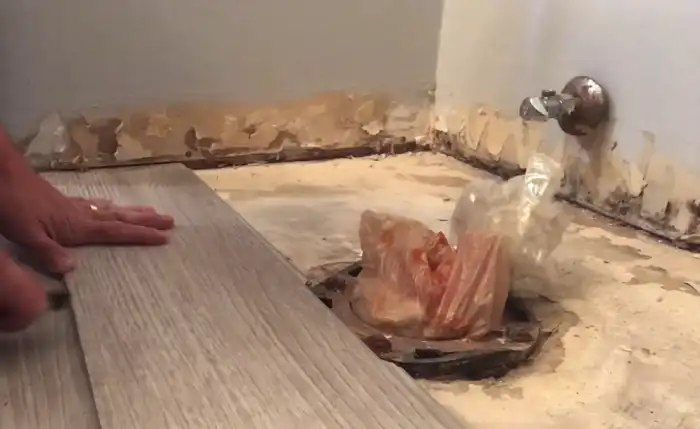
Step 1: Turn off the water supply valve, typically located near the floor behind the toilet.
Step 2: Flush the toilet to empty the tank, then sponge out any remaining water.
Step 3: Disconnect the water supply line from the toilet tank.
Step 4: Remove the old wax ring and flange bolts, then carefully lift the toilet. Place it on a protective surface like an old towel.
Step 5: Lay your vinyl plank flooring throughout the bathroom, cutting a neat circle around the toilet flange using a jigsaw.
Step 6: Reinstall the toilet –
- Place a new wax ring on the flange.
- Lower the toilet onto the bolts, ensuring it’s level.
- Tighten the bolts, reconnect the water line, and turn on the water supply.
What to Consider While Cutting Vinyl Plank Flooring Around a Toilet?
Cutting vinyl plank flooring around a toilet isn’t just about making the pieces fit. It’s about ensuring longevity, preventing water damage, and achieving a polished look. Here are some suggestions to avoid common pitfalls and ensure your bathroom floor looks great and functions properly for years to come.
- Accuracy in measurement and cutting is crucial for a professional-looking installation. Gaps can lead to water damage and aesthetic issues.
- Always wear safety glasses and gloves when cutting vinyl.
- Choose the right tool for the job. A jigsaw is ideal for precise curved cuts.
- Ensure the toilet flange is at the correct height for proper sealing. Use flange extenders if necessary.
- Leave a small gap around the cutout to allow for natural expansion and contraction of the vinyl flooring. This gap will be covered by the toilet base.
- Regardless of the chosen method, always replace the wax ring when reinstalling the toilet.
- Sealing or caulking around the toilet base is a controversial practice. While some recommend it, others advise against it due to potential issues with hidden leaks. Consult a professional or research this topic further before deciding.
Conclusion
Cutting vinyl plank flooring around a toilet doesn’t have to be daunting. With the right tools, careful measurements, and a bit of patience, you can achieve a professional-looking installation. Remember, the key is in the preparation and choosing the right method for your skill level and toilet type. Whether you opt for the template method, direct cutting, or removing the toilet entirely, always prioritize accuracy and safety. And if you encounter a particularly tricky installation, don’t hesitate to seek professional help.
Frequently Asked Questions
Can I use a regular wood-cutting jigsaw blade to cut vinyl plank flooring?
It’s not recommended. Wood-cutting blades are typically too coarse and can chip or tear vinyl. Invest in a fine-toothed blade designed for vinyl or laminate. These blades provide cleaner, smoother cuts, especially around curves like toilet bases.
I’ve heard some people use a heat gun to bend vinyl planks. Is this safe?
While professionals might use heat to bend vinyl in complex situations, it’s risky for DIYers. Too much heat can damage the plank’s structure or finish. Stick to cutting methods unless you have significant experience. If you need a plank to conform to an unusual shape, consider consulting a professional.
My toilet has a very old, rusty flange. Should I replace it before installing new vinyl flooring?
Absolutely. A damaged or rusted flange can lead to leaks, regardless of how well you cut your flooring. Before installing vinyl planks, inspect the flange. If it’s rusted, cracked, or not level with the new flooring, replace it. This is also a good time to check the subfloor for any water damage that needs repair before laying your new floor.

